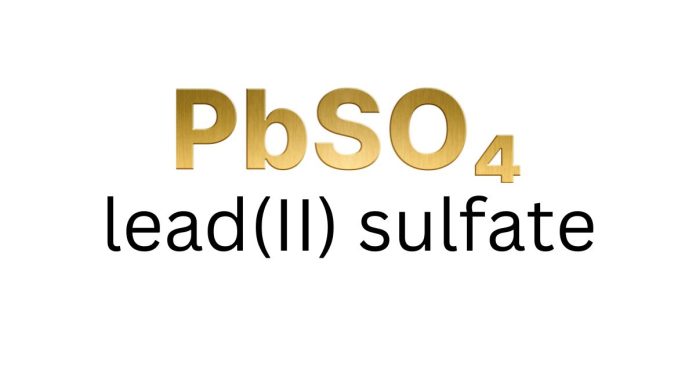What is the Correct Name of the Compound PbSO₄?
Chemical nomenclature can sometimes feel like deciphering a secret code. If you’ve ever come across the formula PbSO₄, you might wonder what this compound is called. Let’s break it down and uncover its correct name.
Breaking Down the Formula
- Pb: This is the chemical symbol for lead, a heavy metal known for its historical use in plumbing, paints, and batteries.
- SO₄: This is the sulfate ion, a polyatomic ion made up of one sulfur atom covalently bonded to four oxygen atoms. The sulfate ion carries an overall charge of -2.
Determining the Name
Lead is a metal that can exhibit multiple oxidation states, commonly +2 and +4. In the case of PbSO₄, the sulfate ion has a charge of -2. The lead must have a charge of +2 for the compound to be electrically neutral. This is why the oxidation state of lead is indicated in the compound’s name.
The correct name of PbSO₄ is therefore lead(II) sulfate.
Why Specify the Oxidation State?
Lead can form other compounds, such as Pb(SO₄)₂, where it has a +4 oxidation state. Specifying the oxidation state with Roman numerals ensures no confusion about which lead compound is being referred to.
Applications of Lead(II) Sulfate
Lead(II) sulfate is an important compound in industry. It is commonly found in lead-acid batteries, which are widely used in vehicles and backup power systems. However, like all lead compounds, it must be handled with care due to its toxicity.
Final Thoughts
Understanding chemical names and formulas is essential for clear communication in science. The compound PbSO₄, known as lead(II) sulfate, is a great example of how chemical nomenclature conveys crucial information about the composition and properties of substances.


